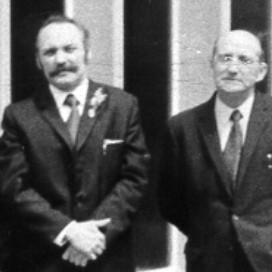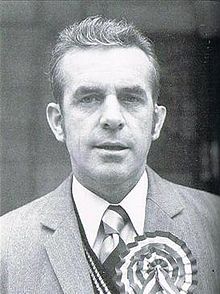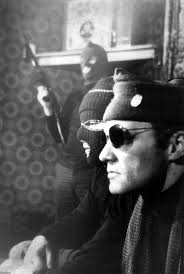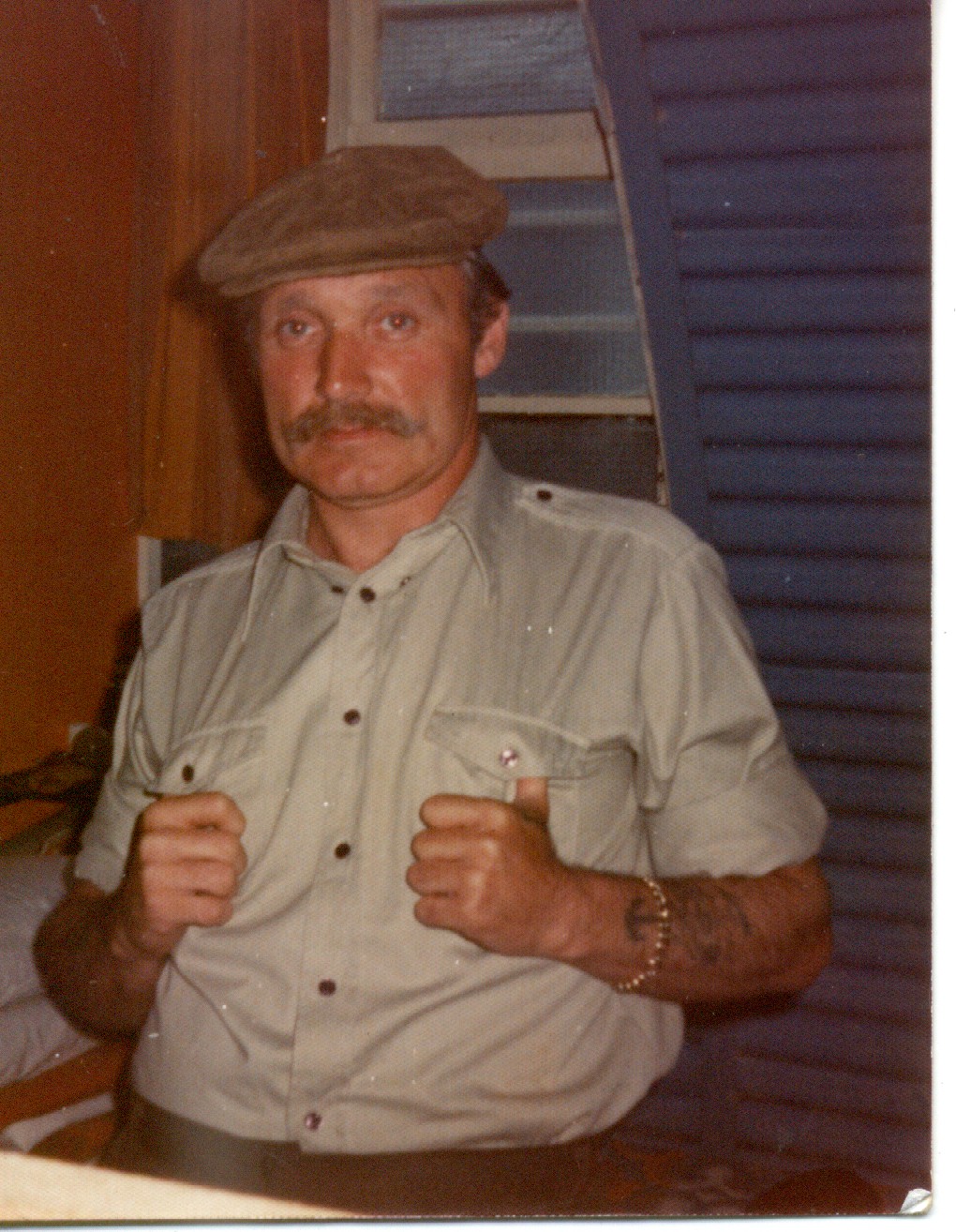Gareth Mulvenna challenges a recent narrative on a 1972 killing.
In the middle of November 2019, campaigner Ciarán MacAirt published an article on his Paper Trail website which revisited the circumstances surrounding the death of IRA volunteer Joseph Downey. Downey was shot dead in the Markets area of Belfast city centre on Friday 21 July 1972. Earlier in the day, the IRA had detonated a number of bombs across Belfast on what would become known as Bloody Friday. Video footage of men shovelling human remains into plastic bags are as vivid and painful to watch in 2019 as they undoubtedly were 47 and a half years ago.
In the article MacAirt draws attention to the possibility that Gusty Spence, who had been kidnapped a few weeks earlier by the UVF on his way back to Crumlin Road Gaol (following a few days parole to attend his daughter’s wedding) may have been involved in the killing of Joseph Downey. Speaking to the Irish News, he said: “If Gusty Spence was indeed in the car, historians will need to rewrite the history of his personal journey to peacemaker because in the summer of 1972 it would appear he reverted to his sectarian gang activities of 1966 and was personally involved in the random shooting of unarmed Catholics in the Market,” [Irish News, 21 November 2019]
 |
| Gusty with his brother Billy at the wedding of his daughter Liz to Winston Rea |
As with all aspects of Troubles history, there is very rarely one side to the story and in the wake of the publication of MacAirt’s piece, a close relative of Gusty Spence contacted me to offer his memories of the time, including the shooting and injuring of Gusty’s wife Louie:
I remember very clearly when Louie was shot. I was in the Star Bar. Gusty came in with the news that she had been shot in Ormeau Avenue in cross fire and wanted me to go to the Royal Victoria Hospital personally to be there. When I arrived, I spoke to Louie in the hospital as she was lying on the trolley on her way into theatre. I held her hand as they wheeled her into the operating room and brought Gusty’s thoughts to her. Shortly thereafter the cops wanted to speak to me but I refused to respond to any questions back then.
I worked in the Gas Department, then at the corner of Ormeau Avenue and Ormeau Road, and the premises had a third or fourth floor room at the very top of the building which looked right down Cromac Street and the Army had a look out permanently billeted there. On the Monday I was able to speak to one of the soldiers and told him who I was and he told me the whole story that the car in which Louie and several other women were travelling was caught in the cross fire between them and gunmen in Cromac Street and it was either IRA gunfire or the army returning, who had hit the car. The army had in that room, and trained into Cromac Street, a tripod heavy general-purpose machine gun mounted on a table. I also had a look through their long binoculars, and the bullets scars and strikes on the Inglis bakery building where Joe McCann was firing from during the earlier gun battle were so close to the view you could have run your fingers over them.
Having discussed the matter with Spence’s relative and other people who were around in 1972 I was told that Ken Gibson (then an intelligence officer with the East Belfast UVF who lived in Imperial Street off Ravenhill Avenue) was driving his wife Betty, Louie Spence and another female friend across town from West Belfast to visit Gusty who was at that stage temporarily encamped in Gibson’s home:
 |
| Ken Gibson |
They were nowhere near where the other shooting occurred as they were preparing to turn right from Ormeau Avenue to go up the road, but after being hit the car turned into Joy Street to attend to Louie. Originally the car was travelling along the Ormeau Road to go up the Ormeau en route to Ravenhill Road where Ken lived.
The relative further added:
MacAirt is also clutching at straws in security force activity reports over that weekend in which he also claimed that a .22 rifle was recovered from the car and coming to his own conclusions.
The soldier that Spence’s relative spoke to went on to tell him that a rifle had been located in an empty house in the area during a normal follow up search after their engagement with the IRA, and not in the car.
This was borne out by the fact that neither Mrs Spence nor any of the others in the car were ever charged with possession of any weapon. Through her solicitor, Jonathon Taylor, Mrs Spence was also awarded £500 compensation for her injuries, which were not life threatening.
Around the time that the killing of Downey occurred, the evening of Bloody Friday, Gusty Spence was surrounded by a number of trusted UVF/RHC personnel. Many of these individuals will perhaps forever go unnamed, but there are some that we know about or who have actually spoken or written about this period. Ken Gibson and Geordie Orr were two of the senior figures; Orr famously prominent (although donning a balaclava) in the World in Action interview Spence granted to David Boulton at this time. Younger militants such as Plum Smith, Ronnie ‘Flint’ McCullough and Billy Hutchinson shadowed Gusty Spence in July 1972, with Hutchinson and the YCV becoming full-time bodyguards after Smith and McCullough were arrested the Thursday after Bloody Friday.
 |
| Gusty Spence during the famous World in Action interview of July 1972 |
Especially with a .22 rifle.
As Iain Turner, who is currently writing a comprehensive history of the UVF, has noted:
The idea of a UVF man going out on a drive-by shooting armed with something as long, unwieldy, slow to operate, and under-powered as a .22 rifle strikes me as very unlikely, given the weapons available even at that time. Perhaps if you were going pigeon shooting, but in the cramped confines of a packed car it’s about as practical and plausible as a bow and arrow.
In his article, MacAirt states:
The British Army told the coroner that its soldiers had engaged gunmen around McAuley Street, Cromac Street and Joy Street but they were only using high-velocity bullets. Joseph, though, was hit with a low-velocity round.
Iain Turner has further noted that:
There seems to have been an assumption made here that loyalists must have shot Downey as he had a “low velocity” wound – implying a handgun or .22 rifle. But the army had Sterling SMGs and Browning pistols too, both low velocity weapons. And a high velocity round fired from an SLR may make a similar would if it was fired from range and had slowed down enough. Unless a projectile was recovered from the body, no one can be definite about what killed Downey.
Another factor to consider is this; would a high profile UVF man such as Ken Gibson really have used his own car to go out ‘on a job’?
Ifs, buts and maybes are terms that crop up repeatedly in weak accounts of the Troubles, and MacAirt has been consistent in his use of these words. They are often found peppered through the assertions he makes in his articles. As an historian with a specific interest in the formative years of loyalist paramilitaries in the early 1970s I know the importance of trying to siphon off the apocryphal and the myth-making to uncover that rare but crucial diamond of truth. My personal issue with articles such as some of those written by MacAirt is that he takes a scatter-gun to the historical record and tries to encourage the reader into buying into a specific narrative, which like some other writers, is unfortunately a la carte in its approach.
In the Paper Trail article, MacAirt notes that ‘The Coroner returned an open verdict, saying it was a confusing case, and probably what had happened would never be established.’
One thing that can be established however is that Gusty Spence was not in the car that Louie Spence, Ken Gibson and his wife and another female passenger (still living) were driving in when they were shot. He was in Gibson’s house in Imperial Street, working on the restructuring of the UVF and at the same time, it has to be construed, ensuring that he avoided at all costs a quick return to the Crum.
 |
| Spence in Long Kesh |






"And a high velocity round fired from an SLR may make a similar would if it was fired from range and had slowed down enough."
ReplyDeleteEven from half a mile away a 7.62mm round is going to make a mess a lot bigger than one from a subsonic firearm. And at that range with the old iron sights or even with a scope you are pushing it to hit a target.
I remember Joe getting killed. Was at the funeral also. I had always believed the British Army had shot him. Most people did. It was doing the rounds that evening that Mrs Spence had been shot in a car and most thought it a rumour. But it was in Ormeau Avenue, if I recall, around Joy Street which is a few hundred yards from where Joe was shot.
ReplyDeleteNot saying it wasn't, just that if it was it wasn't likely to be from an SLR. Still, good article though, cheers Gareth.
Delete